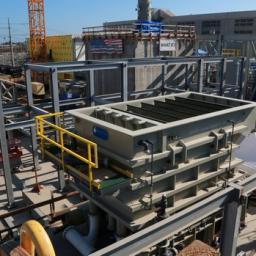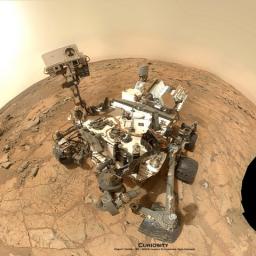
At 70 percent complete, and slated to be open and operating November of 2015,
the Carlsbad Desalination Project is predicted to be, at 50-million gallons per day, the largest and most energy-efficient seawater desalination plant in the Western Hemisphere. And it will supply enough water to meet about 7 percent of San Diego county's water needs.
The water authority has pledged to buy the desalinated water at $2,014 to $2,257 per acre-foot. About twice the cost of traditional water supplies, but about half that of desalination plants just 10 years ago. An acre-foot is enough to supply two homes for a year. During the first full year of production - in 2016 - the desalinated water will add about $5.14 per month to the typical household's water bill, according to the water authority.
"This source, since it's not dependent on rainfall and snow melt, is the (region's) first drought-proof source of water."
But they're not going all-in with desalination. San Diego city's plan to purify wastewater to drinking-water standards is the next major item on their agenda. The city envisions constructing a water-purification plant that can generate 83 million gallons of drinking water per day by 2035. The purification plant could also help eliminate the need for $1.8 billion in overdue upgrades to the Point Loma Wastewater Treatment Plant by reducing the amount of wastewater that must be piped to sea.

In the past decade, probes orbiting Mars and telescopes on Earth have detected what appeared to be plumes of methane gas from the Red Planet. The presence of colorless, odorless, flammable methane on Mars, the simplest organic molecule, helped revive the possibility of life once existing, or even currently living, just below the planet's surface. Scientists have suspected that methane stays stable in the Martian atmosphere for only about 300 years, so whatever is generating this gas did so recently.
A large-scale non-biological source of methane production on Mars might have been an even more exciting result. A renewable process humans might be able to adapt for use on Earth to meet our energy needs. But Curiosity has revealed no trace of methane on the Martian surface.
"Based on earlier observations, we were expecting to land on Mars and measure background levels of methane of at least several parts per billion, but saw nothing," Webster told Space.com.
"It's a mystery surrounded by an enigma here," said imaging physicist Jan-Peter Muller.
http://www.nbcnews.com/science/space/mars-mystery-deepens-curiosity-finds-no-sign-methane-f4B11202946By popular request, a new poll is up:
What was the first computer system you used? As usual, it's hard to list everything, so use the comments section if your first system isn't on the list. Use the comments as well to describe the context of the happy memories from those (probably) simpler times.
And yes, it's a multiple choice poll this time, so you can only choose one, even if you used your VIC-20 to hack into a DataGeneral mini from which you launched DOS attacks on the school mainframe, or whatever.
 At 70 percent complete, and slated to be open and operating November of 2015, the Carlsbad Desalination Project is predicted to be, at 50-million gallons per day, the largest and most energy-efficient seawater desalination plant in the Western Hemisphere. And it will supply enough water to meet about 7 percent of San Diego county's water needs.
At 70 percent complete, and slated to be open and operating November of 2015, the Carlsbad Desalination Project is predicted to be, at 50-million gallons per day, the largest and most energy-efficient seawater desalination plant in the Western Hemisphere. And it will supply enough water to meet about 7 percent of San Diego county's water needs.